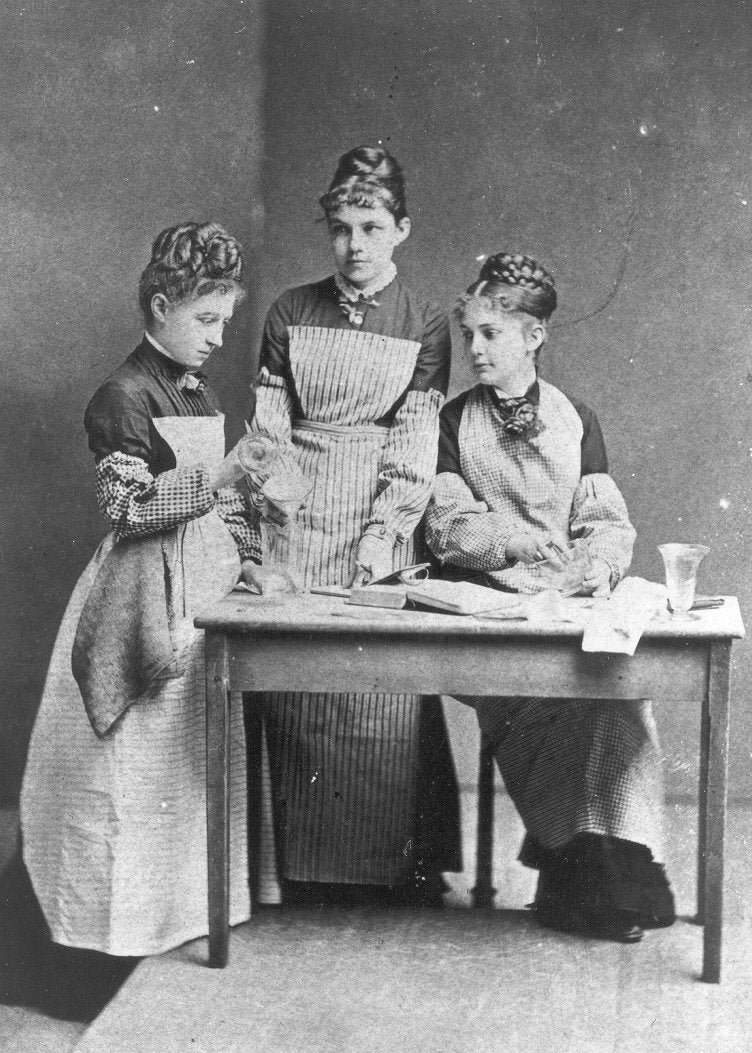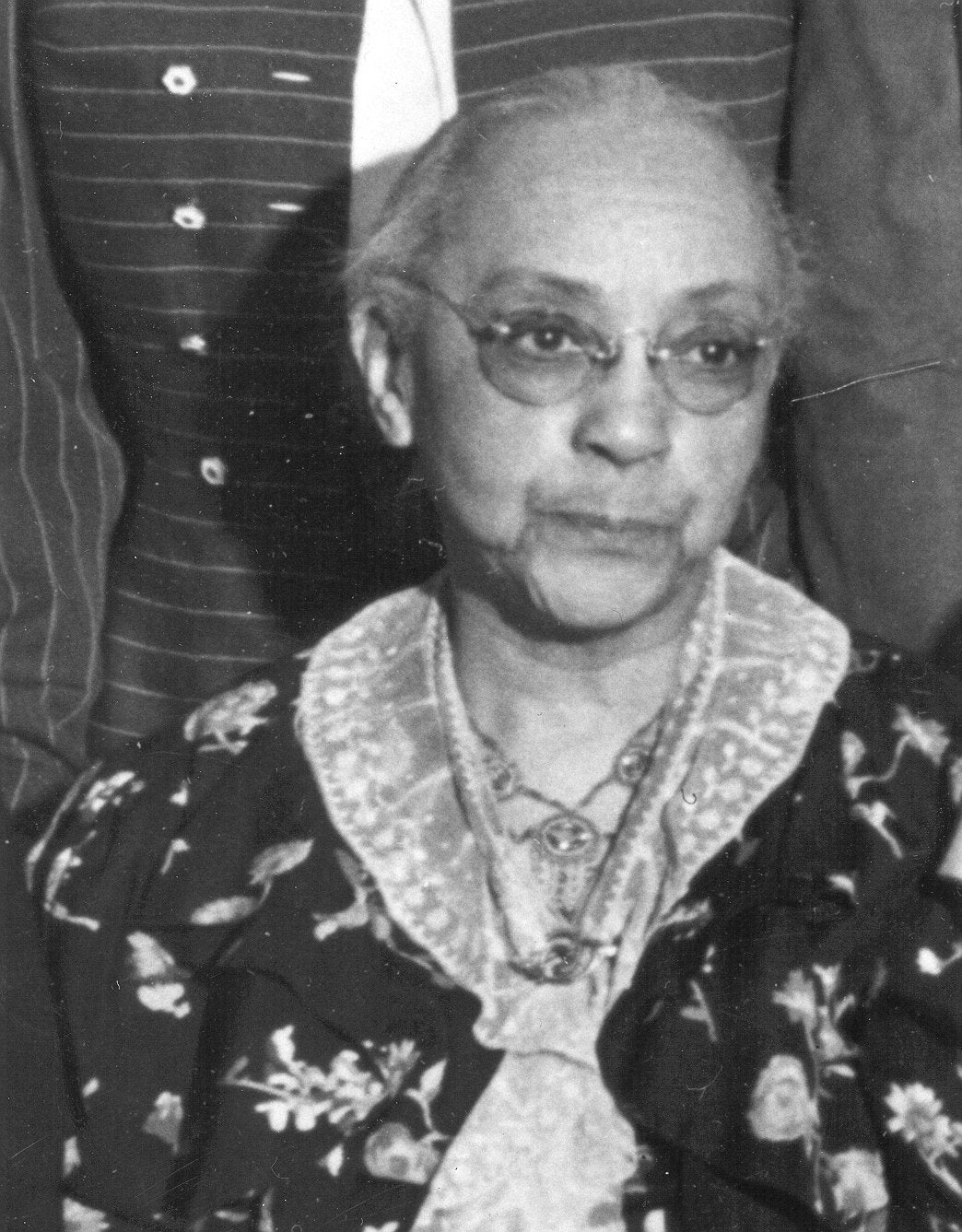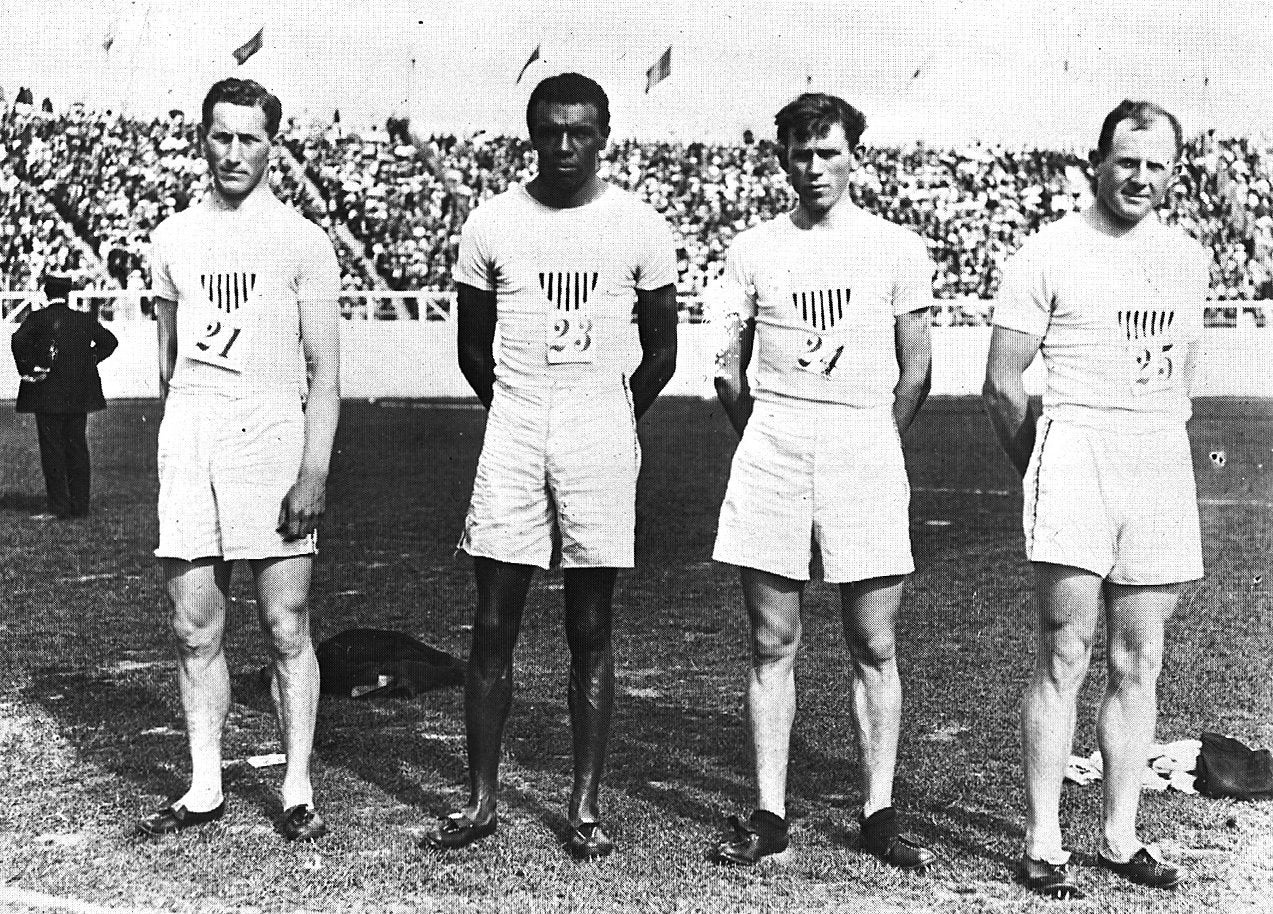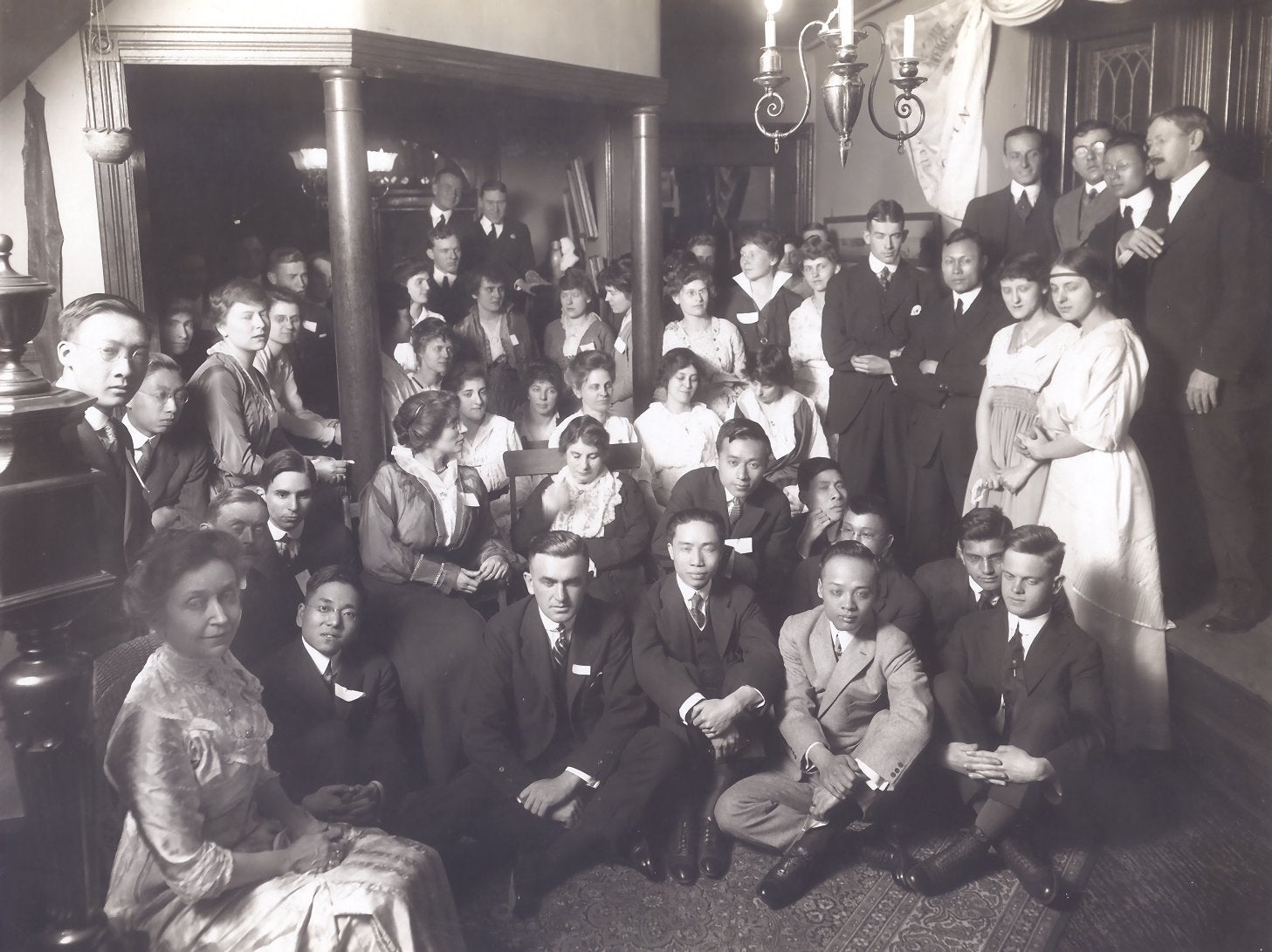“I think that what diversity means today is also meaningful for the whole history of racism and sexism and classism in this country. And that is, it means breaking down the barriers to opportunity and to a really excellent education, and to really open leadership in our society- and those barriers have been many. And a commitment to diversity, to me, means a commitment to struggling against those barriers.”
President Amy Gutmann, “Towards Inclusion”
2006
| 1740 | Benjamin Franklin and Penn’s first Trustees took control of the Charity School trust and completed construction of the “New Building” at Fourth and Arch Streets. |
| 1751 | The Academy of Philadelphia and the Charity School both opened on the Fourth and Arch Streets campus. |
| 1753 | The Trustees appointed Frances Holwell the first Mistress of Girls in the Charity School and opened the school to girls. 212 years later, during the University’s Homecoming Weekend of October 1965, the Trustees dedicated Holwell House, one of the four houses in the Robert C. Hill Residence Hall, in her honor. Ms. Holwell served the School for seven years, concluding her work in 1760. |
| 1755 | The College was chartered.
Two Mohawk Indian brothers, Jonathan and Philip Gayienquitioga, attended the Academy of Philadelphia. They are the first Native Americans to attend what became the University of Pennsylvania and were joined in 1756 by another Indian, John Montour, who studied English. |
| 1765 | The School of Medicine was founded. |
| 1768 | At the University’s annual commencement, four graduating students debated the question of “A Forensic Dispute on the Question, whether keeping Slaves be lawful.” It was the first student debate to discuss the moral issues surrounding African slaves. Twelve years later a similar debate was held at Harvard. |
| 1772 | Moses Levy, said to be the first Jewish student, enrolled at Penn. In 1802 he was elected the first Jewish trustee of the University, and served through 1826. |
| 1779 | The Revolutionary government of Pennsylvania chartered the University. |
| 1802 | The College and School of Medicine moved to a new campus on the west side of Ninth Street, between Market and Chestnut Streets. The Academy and Charity School remained in the old buildings at Fourth and Arch Streets. |
| 1829 | A Cuban, Joseph M. Urquiola (aka José María de Urquiola y Fernández de Zúñiga) from Cuba, graduated with an M.D., the first degree awarded to a Latino. |
| 1836 | First student from Venezuela, Auxencio María Peña, graduated from the Medical School. |
| 1847 | Robert Daniel Ross, a Cherokee, became the first Native American to earn a Penn medical degree. |
| 1850 | The Law School was founded.
Rev. Dr. Morris Jacob Raphall delivered a lecture on “The Poetry of the Hebrews” in the hall of the University of Pennsylvania on 9th St. above Chestnut |
| 1876 | Gertrude Klein Peirce and Anna Lockhart Flanigen enrolled in the Towne Scientific School, known today as the School of Engineering and Applied Sciences, as special students. They were the first women permitted to enroll in college courses at Penn, but they were not admitted in degree granting programs. |
| 1877 | A Department of Music was created and accepted six women as part of a two-year program. |
| 1879 | The first African American students enrolled at Penn: William Adger, James Brister, Nathan Mossell.
The first Japanese student, Tosni Imadate, graduated from the College. |
| 1880 | The first female students admitted into degree programs were Mary Alice Bennett, M.D. and Anna H. Johnson, to the School of Auxiliary Medicine. Bennett received a degree of Doctor of Philosophy in June, becoming the first woman to receive a degree from the University of Pennsylvania.
A Certificate of Proficiency in Science was awarded to Mary Thorn Lewis. |
| 1881 | The Wharton School was founded.
The Law School accepted its first female student, Caroline Burnham Kilgore. James Brister graduated from the Dental School, the first African American to earn a degree from Penn. |
| 1882 | Nathan Francis Mossell graduated from Penn with a Doctor of Medicine after completing his undergraduate work at Lincoln University. He is the first African American admitted to the medical school and the first to graduate.
Graduate School of Arts and Sciences was founded. |
| 1883 | William Adger earned a Bachelor of Arts degree and is the first African American to graduate from the College. Adger planned a career in the ministry and was a student in the Divinity School of the Episcopal Church, Philadelphia. Unfortunately he died at a young age in 1885. |
| 1884 | The School of Veterinary Medicine was founded. |
| 1887 | Miles Tucker became the first African American to graduate from the Wharton School, earning a Ph.B.
Rev. Sabato Morais, Minister of the Congregation Mickvéh Israel, Philadelphia, founder and President of the Jewish Theological Seminar of America at New York City received an honorary LL.D. He was the first Jewish recipient of an honorary degree. |
| 1888 | Elizabeth Weston, a Native American, graduated in the first class of the Hospital Training School for Nurses. |
| 1890 | Ida Elizabeth (Bowser) Asbury, with ancestral ties to African Americans, Indians, the English and Scottish, was the first African American female to graduate from Penn. Asbury earned a Certificate of Proficiency in Music as a violinist. She taught music after graduating and married John Cornelius Asbury, a politician and member of the Pennsylvania State Assembly. |
| 1892 | Anna Robertson Brown becomes the first woman to receive a Ph.D. from the University of Pennsylvania. |
| 1893 | The nation’s first Newman Club was formed at Penn by Timothy L. Harrington, M.D. and a group of Catholic students. According to a history by one of the earliest members, Timothy L. Harrington, the Club’s initial meeting took place in the rooms of Michael O’Brien and Peter O’Donnell, students of the medical and dental school, respectively. Also present was Rev. Dr. P.J. Garvey, Rector of St. James Catholic Church in West Philadelphia, a popular church for Penn students to attend mass. |
| 1894 | Fuji Tsukamoto enrolled in the Graduate School of Arts and Sciences, the first Asian American woman to matriculate at Penn. |
| 1896 | The Wharton School appointed W.E.B. DuBois “Assistant in Sociology” while he conducted research and wrote on “the social condition of the colored People of the Seventh Ward of Philadelphia.” The Philadelphia Negro, a well-known publication of his findings, was published in 1899. After spending a year at Penn, DuBois left for Atlanta University where he taught economics, history and sociology from 1897 to 1909. He became famous, on a national level, for serving as a co-founder of the National Association for the Advancement of Colored People (1909).
Lewis Baxter Moore earned the first Ph.D. awarded to an African American at the University of Pennsylvania. Prior to attending Penn, Moore was awarded his A.B. and A.M. degrees from Fisk University. At Penn Moore studied the Classics and was one of five African Americans to have earned a Doctor of Philosophy Degree from any university. |
| 1899 | The first Chinese student, Moon Hung Chaun (周夢熊), D.D.S. graduated from Penn. |
| 1900 | At the University’s annual commencement, an honorary LL.D. was presented to both the President of Mexico, José de la Cruz Porfirio Díaz Mori, and the Chinese Imperial Envoy to the United States, Ting-fang Wu (伍廷芳). |
| 1902 | An accomplished student, Julian Francis Abele, graduated with a degree in Architecture. He was the first African American graduate of the Graduate School of Fine Arts and a distinguished Philadelphia architectural designer. |
| 1906 | The College Courses for Teachers (CCT) was founded. The CCT was the predecessor to the College of General Studies (CGS) and its courses led to the degrees of Bachelor of Arts and Bachelor of Science. |
| 1907 | The Christian Association (CA) opened a summer camp for boys in Greenlane, PA, continuing the community-oriented service work started in 1898. Penn students served as counselors and the camp required a 50/50 white/non-white ratio. This camp and its corresponding camp for girls (started in ’25), prospered well into the 1960 when both were separated from the CA and placed under control of the Diversified Community Services (DCS). The DCS, being religiously unaffiliated, mad the camp eligible for funding from the United Way. |
| 1908 | The development of an international house at Penn started with a chance meeting between Dr. A. Waldo Stevenson and a group of Chinese students. After befriending the students, Stevenson was informed of the difficulties international students regularly face, namely, their isolation on campus. In Dr. Stevenson’s apartment, and later Houston Hall, the group met regularly to discuss issues affecting international students at Penn.
John Baxter Taylor, Jr. graduated from the Vet School and at the summer Olympics in London was the first African American to win a gold medal. Part of the winning and world record setting 1,600 meter relay team, his teammates included Nathaniel Cartmell, Melvin Sheppard and William Hamilton. A testament to his character, the Vet School Class of 1908 yearbook stated “We of the Class of 1908 are proud and can boast of having one of the greatest athletes the world has ever known.” |
| 1910 | George Nitzsche, Penn’s first director of publicity, created a recruiting brochure, translated into Spanish. Approximately 10,000 copies circulated throughout Latin America over the next two years. One newspaper article called Nitzsche, “a foster father to students from foreign countries.”
The Cosmopolitan Club started the year off in a new house on 3419 Walnut St. They held an opening ‘smoker,’ with students from 40 nations represented, as they were formally welcomed to the University. Vice Provost Edgar F. Smith delivered a speech on the University of Pennsylvania as he sought to “bring together students of different countries and break down misunderstandings existing between them.” |
| 1914 | The School of Education was founded and the first to offer a modern, full-time, four-year, undergraduate, professional degree to women. In the same year, the School of Medicine and the School of Dental Medicine admitted women for the first time. |




